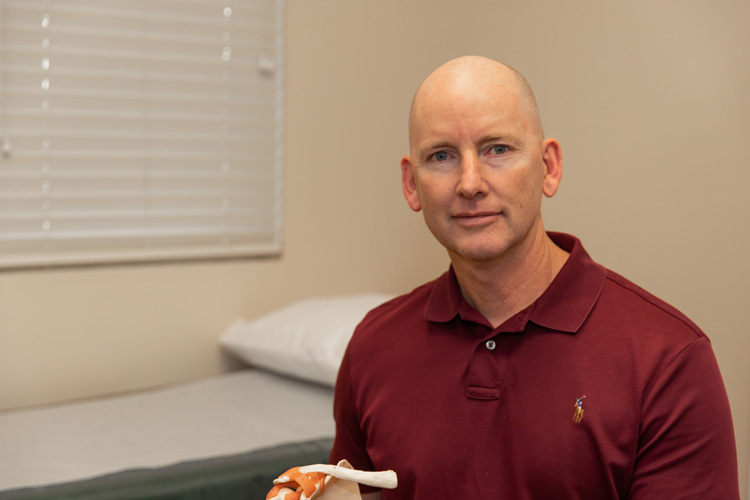
Rotator cuff tears are so common, says the American Academy of Orthopaedic Surgeons, “that each year almost 2 million people in the United States visit their doctors” seeking treatment for the condition.
Dr. Anthony Ware of Coastal Orthopedics and the Steward Medical Group thinks he may have found a better and longer-lasting way to repair those tears.
It’s called “biological augmentation.”
The rotator cuff quite literally keeps your arm in your shoulder socket. The cuff consists of four separate muscles that come together as tendons to form a covering around the head of the humerus bone – the long bone in the upper arm – between the elbow and shoulder. When the rotator cuff is torn, you may not be able to raise or even lower your arm.
Even the simplest of daily tasks, such as getting dressed or combing your hair, can become difficult and painful.
And the Mayo Clinic warns “without treatment, rotator cuff tears may lead to permanent loss of motion or weakness and may result in progressive degeneration of the shoulder joint.”
The National Institutes of Health says that while “excellent clinical results of arthroscopic repair of rotator cuff tears have been reported … re-tears after those surgeries are one of the most common complications.”
It’s here that biological augmentation is showing its promise. It seems to provide a stronger fix for torn rotator cuffs and may make those post-operative re-tears much less likely.
As Ware explains, Regeneten, the company that packages the biological augmentation kit he uses, “came up with this idea of trying to use some type of a collagen patch. Our tendons are made of collagen, so they decided they would try to use this collagen and lay it on [the torn tendon] like a patch. Almost like with a flat tire on your bicycle: You take off the tube and you put a patch on it. And this collagen will incorporate into your native collagen in about a three-month period and it actually thickens your tendon by two to three millimeters and therefore reduces the strain on the tendon.”
Briefly sounding more like a physics teacher than a surgeon, Ware points out “stress is force for area,” so, as he puts it, when the cuff is even partially torn, “you’re distributing a larger force on a smaller area, thereby increasing the stress.”
Is this new approach infallible? No. It hasn’t even been in use long enough to have medically significant statistics to claim that it is. But patients who have had this biological augmentation have spent an average 31 fewer days needing to wear post-operative slings and were able to return to work some 50 days sooner than those who did not have this procedure.
They also required substantially fewer post-op pain relievers during recovery.
These collagen patches can be as small as a postage stamp and, like modern aortic valve replacements, they are harvested from cattle rather than cadavers.
“These seem to work better than donor grafts from cadavers,” Ware explains. “We’re also able to purify these grafts more to get all the foreign debris and DNA out. That’s the material your body can react to as foreign. So, we’re able to get a somewhat more pure … collagen implant so when you do put it in, it doesn’t have graft rejection. It’s also a little bit more porous so it allows in-growth of your native tissue into it,” making the patch all the stronger.
That said, if you’ve never heard of this approach, you’re not alone.
As Ware freely admits, “I think it only became commercially available earlier this year.
“What’s really interesting about this is that although we put the patch on the top [of the torn tendon], it is actually healing tears underneath. And so what they theorize is happening is that by reducing the strain on the rotator cuff by about 40 percent, it is allowing these partial tears to actually heal.”
If that’s the case it truly is groundbreaking.
Rotator cuff tears typically don’t fully heal on their own but so far the results from this biological augmentation procedure are promising. Adding to the good news, it is all done with through a minimally invasive laparoscopic procedure.
Dr. Anthony Ware is with Coastal Orthopedics and the Steward Medical Group. His Vero Beach office is at 1715 37th Pl., Suite 101. The phone number there is 772-778-0600. In Sebastian, his office is at 13000 U.S. 1 where the phone is 772-589-0331.



